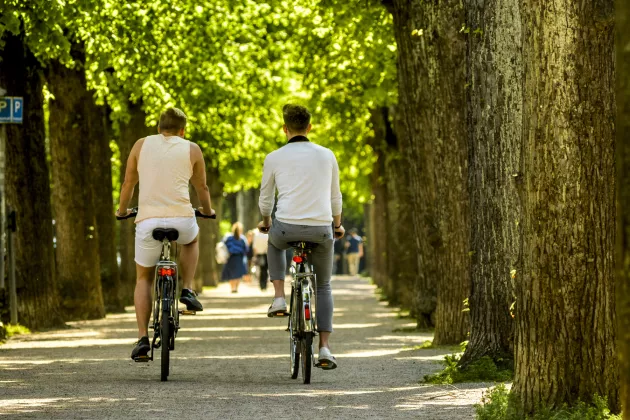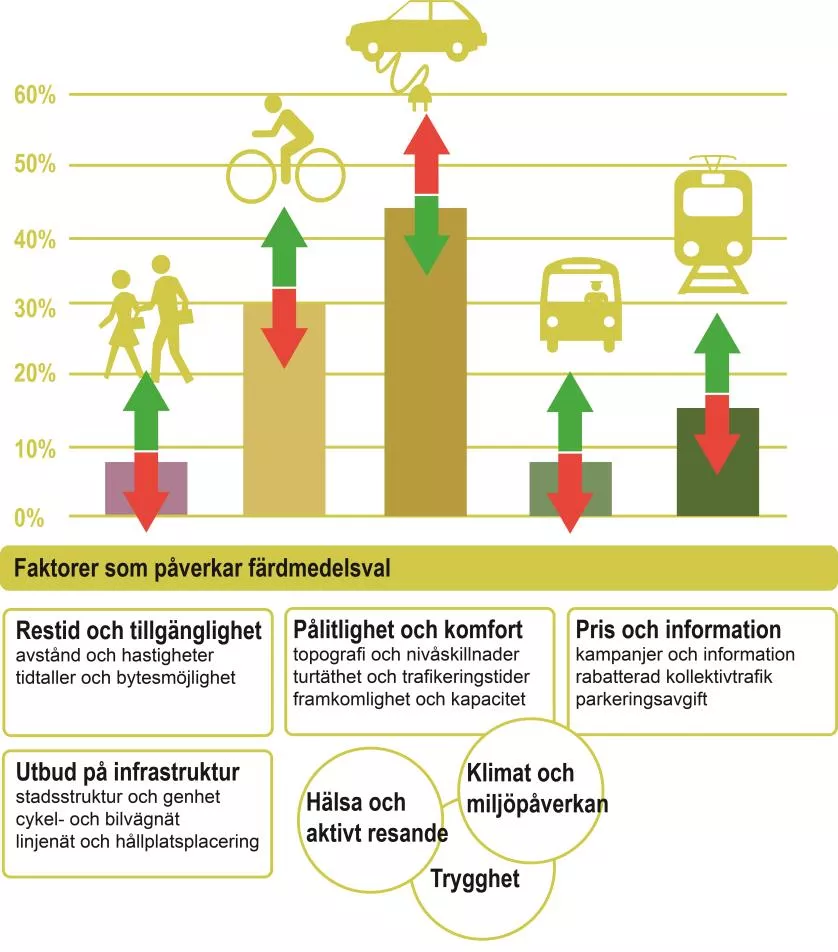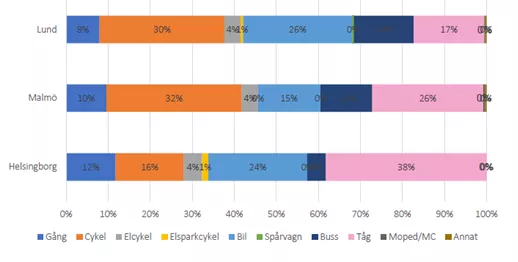Results from the two studies show that most of the University’s staff already have the option to use public transport, walk or cycle to the workplace. Through several measures, the University can increase the percentage of sustainable journeys step-by-step and further reduce the reliance on car usage.
The travel habits survey was carried out through a questionnaire aimed at both staff and students. A total of 4,475 people responded. Among staff members, the response rate was 45 per cent. A mobility analysis was then conducted that analysed geographical information about the location of the workplaces and the staff members’ placements, infrastructure such as footpaths and cycle paths, public transport, road network and travel times. Advanced network computations were then used to examine how long staff members can travel within reasonable timeframes in relation to the distance for different modes of transport. The studies were conducted by Sweco in 2022.
In the travel habits survey, the respondents were divided up based on the three campuses in Lund, Malmö and Helsingborg. Among those working in Lund, 8% answered that they walk to work (gång), 35% cycle, 31% take the train (tåg) or bus and 26% travel by car (bil). Of those working on the Malmö campus, 10% state that they walk, the percentage that cycle is 36% (including e-bikes) and 38% use public transport. The percentage for car travel is 15%.
The results of the analysis showed that staff members who live in the city where they work have good possibilities to walk or cycle to their workplace within 2-5 km. For a commuting distance of 5-10 km all the urban areas of Malmö and Lund could be reached by bicycle. Public transport is a practical alternative for short journeys and up to 85% of staff could reach work within 40 minutes by train and bus.
The measures that the respondents state as important in making a change to a more sustainable alternative are: improved infrastructure for cycling, increased range of public transport and scarcity of parking spaces close to the workplace to reduce the reliance on car travel.
To sum up, Lund University wants to work actively to promote sustainable travel based on insights from the travel habit survey and the mobility analysis. The University’s aim is to increase the percentage of sustainable journeys and reduce the reliance on car travel through various measures that promote flexibility and convenience for staff and students. An action plan is to be drawn up.




